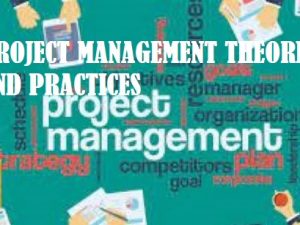| Table of Contents |
Executive summary
1.0 Introduction
2.0 Project portfolio management
3.0 Work Breakdown Structure (WBS)
4.0 Critical Path Diagram (CPD)
5.0 Responsibilities matrix of the project
6.0 Costing & Budgeting
7.0 Quality management process
8.0 Major Stakeholders and Managing the Stakeholders
9.0 Communication to the Stakeholders
10.0 Risk management
Conclusion
References
|
| Preview |
Executive summary
In the past, the businesses were mainly aiming at their production processes and competitiveness. But with the development of the needs and wants, in the modern business the customer has become the vital part of a business. Thus many companies use many different methods to satisfy their customer in each and every way they could think of. Also with the current technological development, information plays a major role in addressing the customer’s needs and wants. Thus most of the companies tend to collect data as much as possible, process them and get useful patterns and trends with the processed information, which affects their strategies.
Talking about this report, it is addressing the information needs of Hemas Holdings. HEMAS’s Business Development department currently uses a business information tool named “MITS” from 1.5 years. It has proved to be worth in accessing the customer’s needs wants and in management decision making. This report will access the stage two of the same MITS system which HEMAS plans to introduce to some more segments they operate in. Overall this report covers how the project is planned, conducted and implemented. The company’s already available data have been used for the analysis along with secondary data available at the market.
The projects viability has then been evaluated, analyzing the cost vs benefits it generates. Then the stakeholder management is advised and the effective communication methods with the stakeholders are discussed. Then the risks which is expected to face are discussed with proper risk mitigation methods. Impact of those risk mitigation is addressed later. Finally it is concluded what HEMAS will achieve by correctly implementing this project, which will be a milestone in their history.
1.0 Introduction
A project could be viewed as an amalgamation of interrelated and interconnected activities led by an individual or a group of individuals in order to realize a set of pre-defined goals and objectives within a set time frame and cost and quality parameters. As such, the main intention of this report is to analyse the project management dimensions of HEMAS. At present, HEMAS operates a BI software named as “MITS” within the business development department in order to tweak and fine tune the process of decision making within the business. Currently, in the business network of HEMAS, approximately 60 companies are operating within several sectors. As such, the company is processing a large number of transactions on a daily basis. MITS software is used by HEMAS for the past 1.5 years in FMCG sector. Given the success in these sectors, the management now wishes to expand the access of this to other sectors as well. At the initial stage, the software is to be introduced to financial services, leisure and transportation sectors of the company as it could be utilized to facilitate decision making process with regard to cash flows, profitability, investments and market share of each business units. Since the company utilize ERP and SAP systems to record and save data and information, these data now needs to be transferred from ERP and SAP systems to MITS for data analysis purposes. MITS would use time series, covariance and correlation techniques to process and analyze the data sets.
Successful implementation of the project, would open access to senior management in marketing, finance and other business units to the system in order to view and analyze the information including historical data. The system has been developed based on user feedback and would further be modified and developed based on the output and review of the users.
Project manager has been selected from the Business Development Department to manage and handle the entire project under the leadership of General Manager of the business development department. Budgetary allocations for the project has been made from the budget of business development unit. Accordingly, no financial resources have been obtained from other business units.
|





